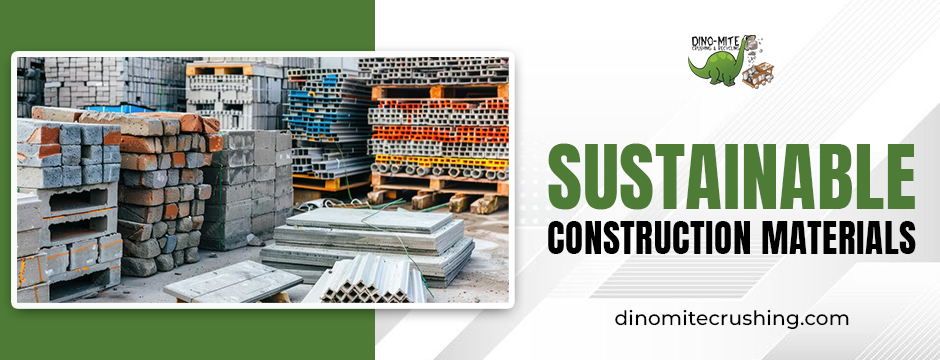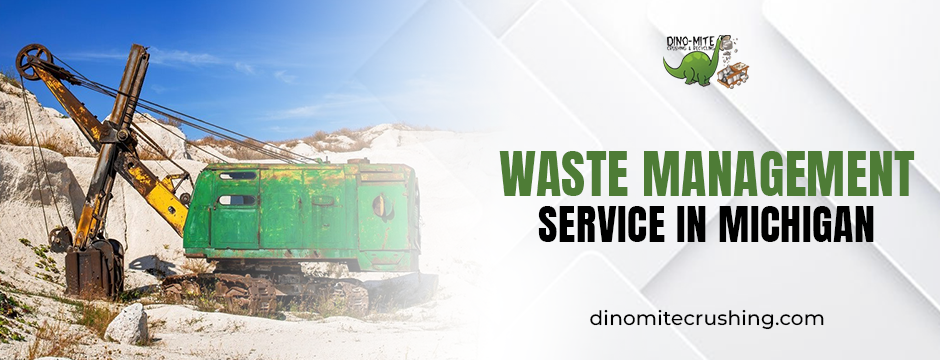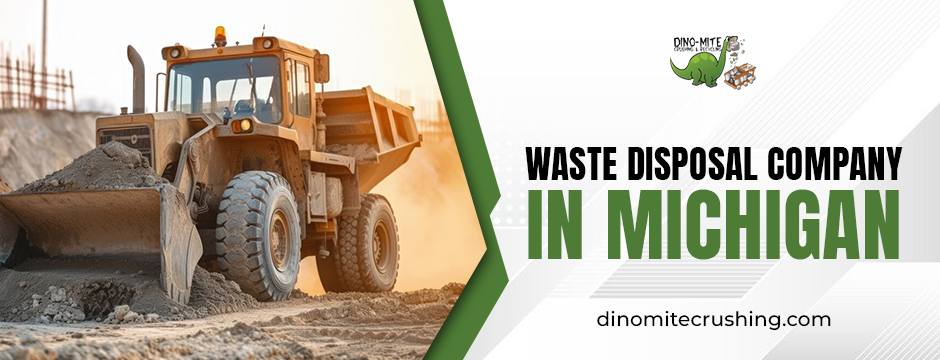With the fast-paced construction revolution in the modern era, the selection of materials is key to determining the future. At the core of this revolution is the need for sustainable construction materials. Going beyond being a trend, it is a sound decision that is good for the environment, the economy, and your project results.

As contractors, builders, and homeowners, we have the ability to influence a cleaner future. With every eco-friendly material we choose, we inch nearer to an efficient world. Let’s see how these materials enable us to build better and smarter.
1. Minimizing Environmental Impact
One of the most powerful arguments for the use of sustainable construction materials is their environmental benefit. Conventional materials tend to need a lot of energy and natural resources in order to be manufactured. Compared to this, sustainable materials utilize recycled materials, renewable materials, and low-emission manufacturing processes.
When we depend less on non-renewable resources, we contribute to the conservation of ecosystems and reduce pollution. That way, future generations get to inherit a healthier world. It’s not about constructing a building; it’s about constructing with intent.
2. Encouraging Energy Efficiency
Another major advantage of sustainable construction building materials is energy savings. These materials don’t just contribute to sustainability during production; they also improve a building’s long-term performance. For example, using energy-efficient insulation helps regulate indoor temperature. That means less heating in winter and less cooling in summer.
In the long run, this means huge energy savings and lower bills. We can construct buildings and homes that are smarter, more pleasant, and more affordable to maintain. That’s good for both of us and the environment, too.
3. Enabling Healthier Indoor Environments
We consider safety when we construct. But what about air quality and long-term exposures? Most traditional building materials release volatile organic compounds (VOCs) and toxic chemicals. These harmful substances can cause respiratory ailments, allergies, and long-term illnesses.
Sustainable building materials prevent such risks. Materials such as low-VOC paints, reclaimed flooring, and natural fiber insulation contribute to cleaner indoor air. They build healthier living and working environments. We don’t merely construct walls—we build environments that promote human health.
4. Increasing Long-Term Cost Savings
Sustainable choices often come with the misconception that they’re expensive. But that’s not always true. While some sustainable construction materials may have a higher upfront cost, they often last longer and perform better over time.
For example, recycled concrete and high-performance windows lower maintenance requirements and energy consumption. This leads to cost savings over the long term and fewer replacements. If we look at the complete life cycle cost, sustainability becomes a cost-effective and pragmatic solution.
5. Minimizing Waste in Construction
Construction and demolition debris make up a significant amount of landfill space in the United States. But we can do better. Selecting recycled or reusable materials significantly decreases what goes to landfills.
Some businesses go one step further and partner with a waste management service in Michigan so that proper recycling and disposal practices are implemented. Minimizing the amount of waste supports a circular economy. It’s an intelligent move that also saves money and minimizes harm to the environment.
We can see firsthand how much difference it makes to take what was previously waste and make it useful building materials. Every step in the direction of reusing materials contributes towards a greener construction future.

6. Complying with Green Building Specifications
Environmental design isn’t only kind to the earth—it’s increasingly mandatory. Most local and national building codes now stipulate sustainability standards. Developments that incorporate sustainable building materials can become certified under the likes of LEED (Leadership in Energy and Environmental Design) or WELL Building Standard.
These certifications can drive up property value, enhance brand reputation, and find tenants or buyers who are concerned about the environment. When we select sustainable materials, we set ourselves up for success in a shifting market.
7. Preserving Natural Resources
Let’s be realistic—resources such as sand, stone, and wood are not infinite. We need to use them wisely. Utilizing materials from recycled content preserves these resources for future applications.
For instance, reclaimed wood and recycled aggregates provide both character and performance without devastating natural landscapes. Working with a waste disposal company in Michigan also allows us to make sure that the materials we throw away don’t end up in the dumpster but rather get a new life in the next project.
Conservation isn’t sacrifice—it’s creativity. And it begins with the materials we select.
8. Increasing Project Durability
Sustainable doesn’t equal weak. Actually, a lot of sustainable building materials are more durable and stronger than their conventional counterparts. Materials such as recycled steel, bamboo, and alternative concrete hold up against weather, wear, and time.
This strength lowers the cost of repairs and increases the life of buildings. Whether we’re building a small house or a giant commercial building, we desire products that stand the test of time. Sustainability and durability can co-exist.
9. Fostering Innovation in Design
Employing green materials gives way to innovative and contemporary style. These materials are available in an array of textures, colors, and forms that complement both form and function. Designers and architects can now access a wider range of sustainably derived possibilities.
We can create structures that look great, perform well, and leave a lighter footprint. From natural wood finishes to green roofs and recycled tiles, the possibilities are endless. The future of design is green, and we’re excited to be a part of it.
10. Aligning with Consumer Values
Buyers, renters, and customers today are passionate about being green. They want to have homes and workplaces that align with their values. Sustainable construction materials bring your project in sync with this increasing demand.
No matter if it’s a residential construction or commercial development, eco-friendly features can provide your project with a competitive advantage. Individuals feel more comfortable about working and residing in structures that respect the environment. As developers and builders, we also have an opportunity to spearhead that cause.
Our Commitment to Sustainability
At Dino-Mite Crushing, we know how essential material selection is to the success of a construction project. That’s why we provide a wide variety of sustainable building materials that suit your individual requirements.
Our staff focuses on green solutions from the very beginning. We procure high-quality, eco-friendly products that are environmentally friendly as well as industry-approved. From recycled aggregates to green insulation, our product inventory is a testament to our commitment to sustainable building.
Being a trusted provider of sustainable building materials, Dino-Mite Crushing believes in building a future where development and environmental care go hand in hand. We’ve partnered with trusted manufacturers and taken every step to ensure our materials support long-lasting, high-performing, and eco-friendly results.
Final Thoughts
Selecting sustainable construction materials isn’t only a good idea—it’s the correct one. They provide functional advantages such as cost savings, improved performance, and healthier indoor environments. But more significantly, they help us fulfill our collective purpose to care for the earth.
We all have a part in creating the future of building. Let’s do it with a sense of responsibility, innovation, and intent. When we construct sustainably, we not only build structures—we build a legacy.
Are you ready to create your next project in an eco-friendly way? Let’s create something better together.


Leave A Comment